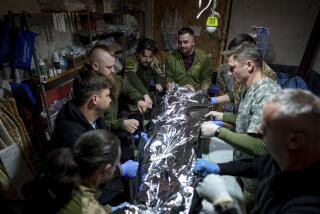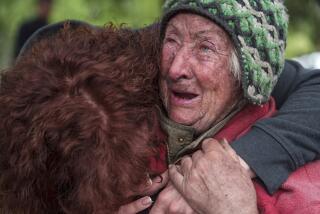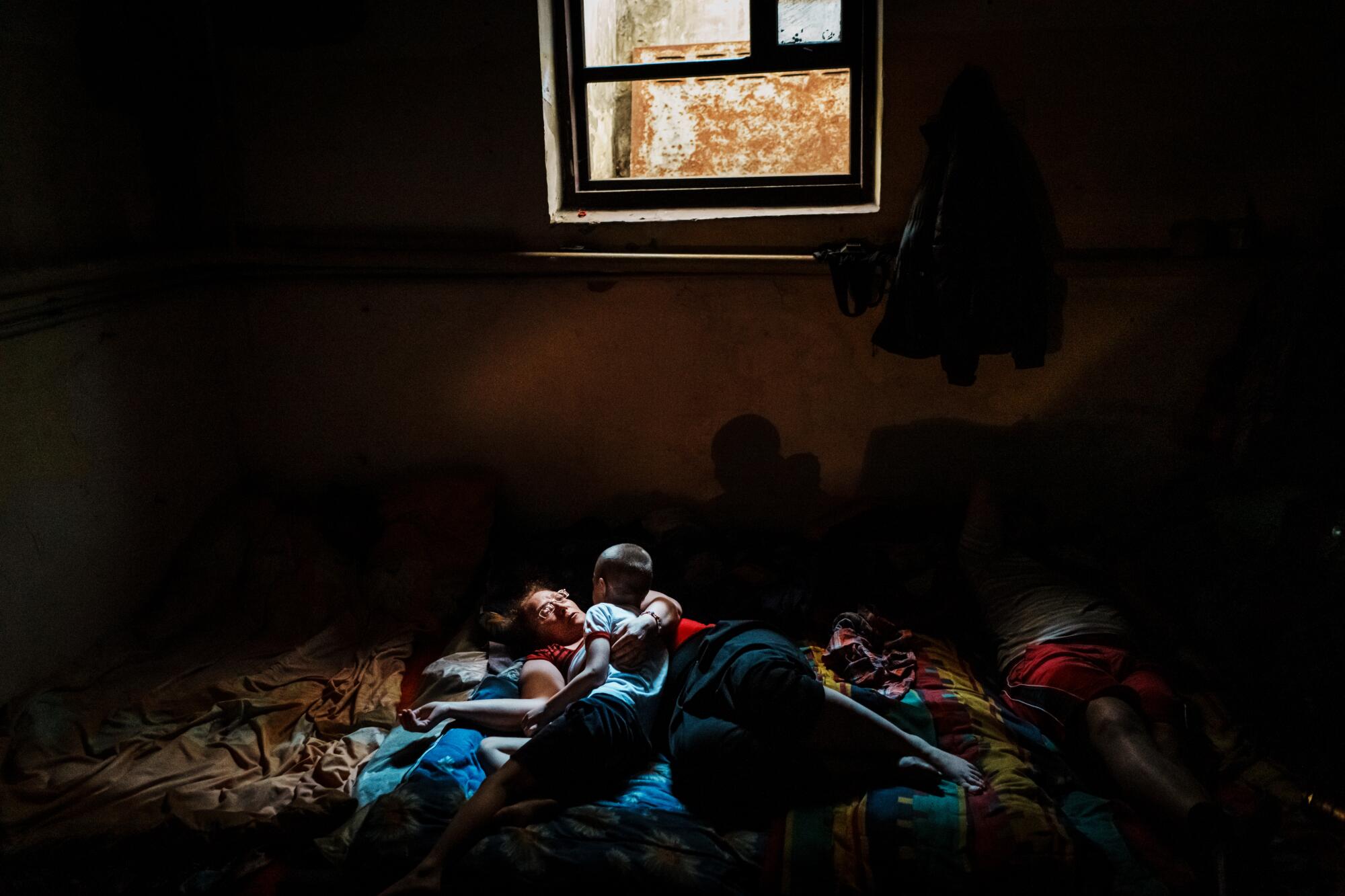
- Share via
KRAMATORSK, Ukraine — Haggard faces stare blankly from inside minivans ferrying survivors from towns and villages bludgeoned by Russian armor. Ukrainian ambulances carry the wounded and dead from the battlefield, sharing the road with rumbling tanks.
Detonations sound in the distance as lost souls adrift in this ghost city line up for giveaways of food and medicine.
“Soon, the shelling will come here,” predicts Serhii Barkov, 38, his left arm still bandaged from wounds sustained during Russian bombardment of his eastern Ukraine village, Studenok. “Once the shelling starts, you just run wherever your eyes can see,” he says, nervously dragging on a cigarette outside the hospital. “Things will get worse here in a few days. I need to leave.”
For Ukraine, the war has taken a dark, edgy turn in the Donbas, the vast swath of farm towns, coal pits and smokestack cities that forms much of the country’s eastern border with Russia. Divided since 2014 between Ukraine and pro-Russia separatists, the Donbas — home to more than 4 million before Moscow’s invasion of Ukraine on Feb. 24 — appears in danger of falling completely to Moscow.
The process could take weeks or months: No decisive breakthrough seemed imminent as the war entered its 100th day this week. Ukrainian commanders still express hope of turning the tide, while engaging in counteroffensives in the south, near the Russian-controlled city of Kherson, and in the northeast outside the city of Kharkiv. But the momentum in the east has clearly shifted under a relentless hail of Russian artillery.
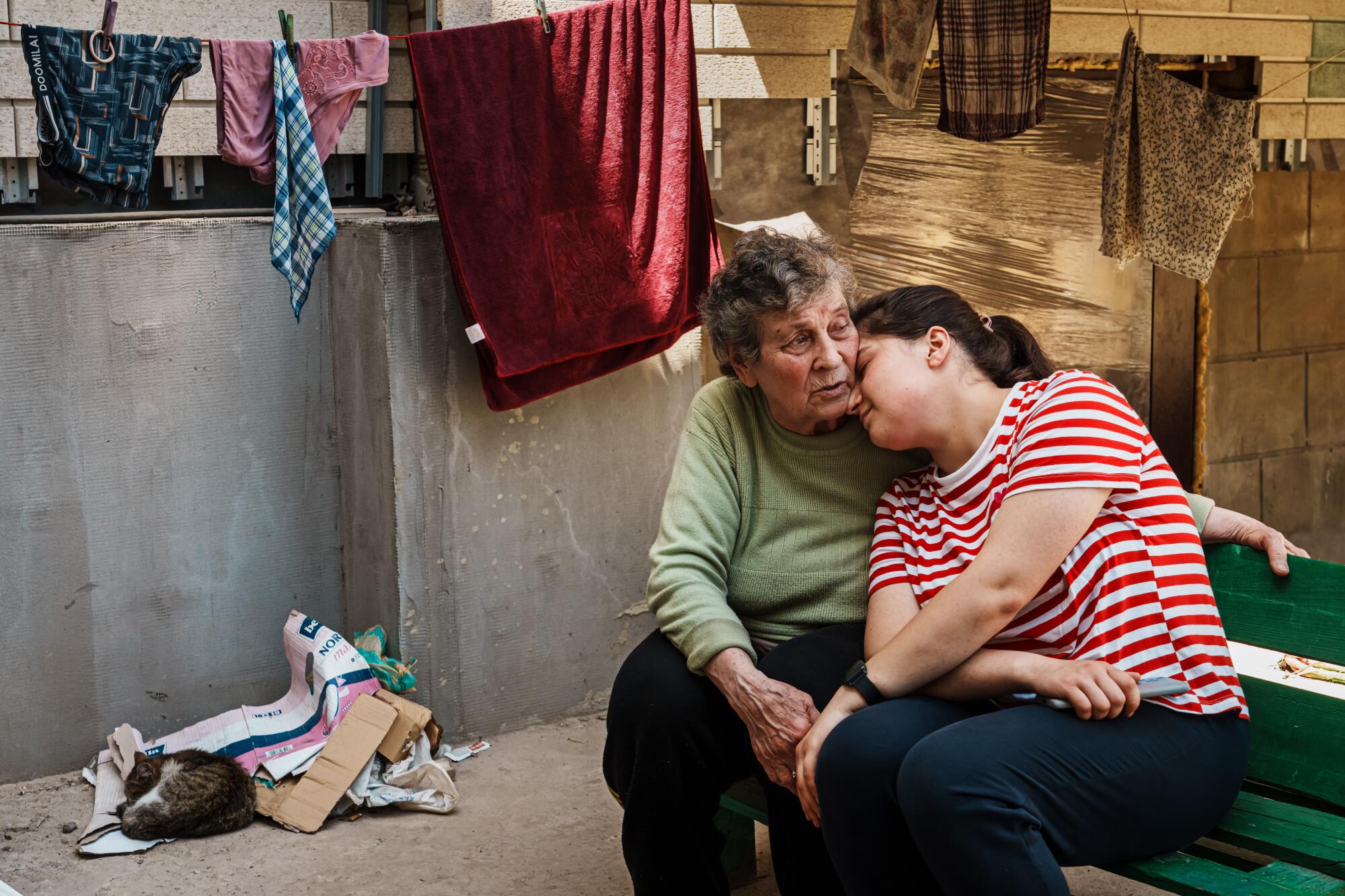
Ukrainian forces that repelled Moscow’s attacks on the country’s two most populous cities — Kyiv, the capital, and Kharkiv — are now decidedly on the defensive here.
President Biden’s announcement this week that Washington was providing advanced rocket systems to Ukraine has bolstered some hopes for a battlefield turnaround. The Pentagon had previously sent more than 100 long-range howitzers.
The Kremlin said the arms transfers amount to “pouring fuel on the fire,” constituting a proxy war meant to weaken Russia.
But it is unclear to what extent, if any, that the slew of new weapons will disrupt the Russian onslaught.
“I wouldn’t say that’s a game-changer,” said Jeffrey Edmonds, an analyst at CNA, a research group based in Arlington, Va.
“I think the Russians will feel it. But it’s not going to suddenly reverse Russian gains,” added Edmonds, a former director for Russia on the White House National Security Council.
Despite reports of dispirited Russian troops, obsolete equipment and a sclerotic command structure, Moscow appears to have seized the advantage in the eastern region — at least for now.
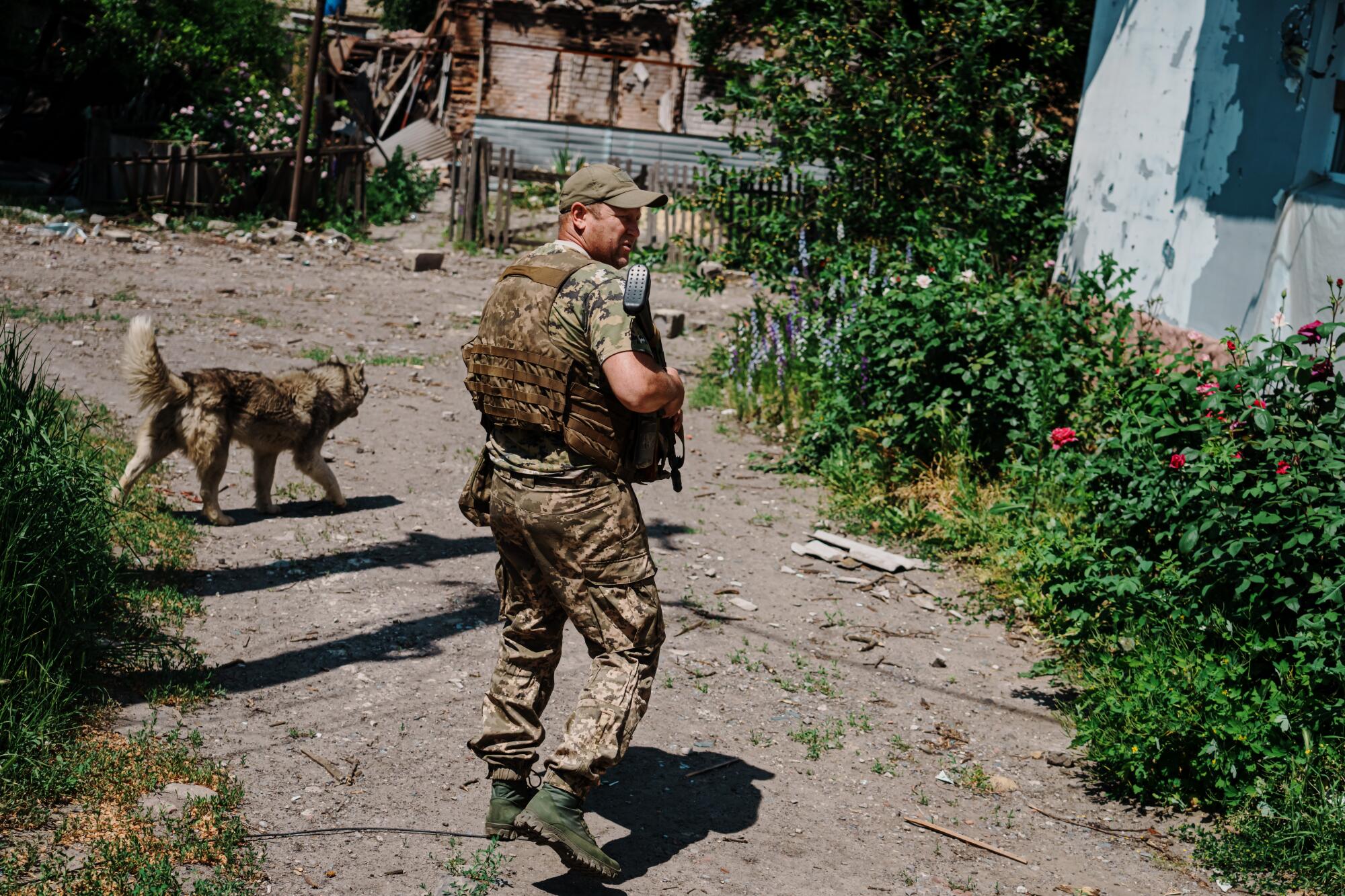
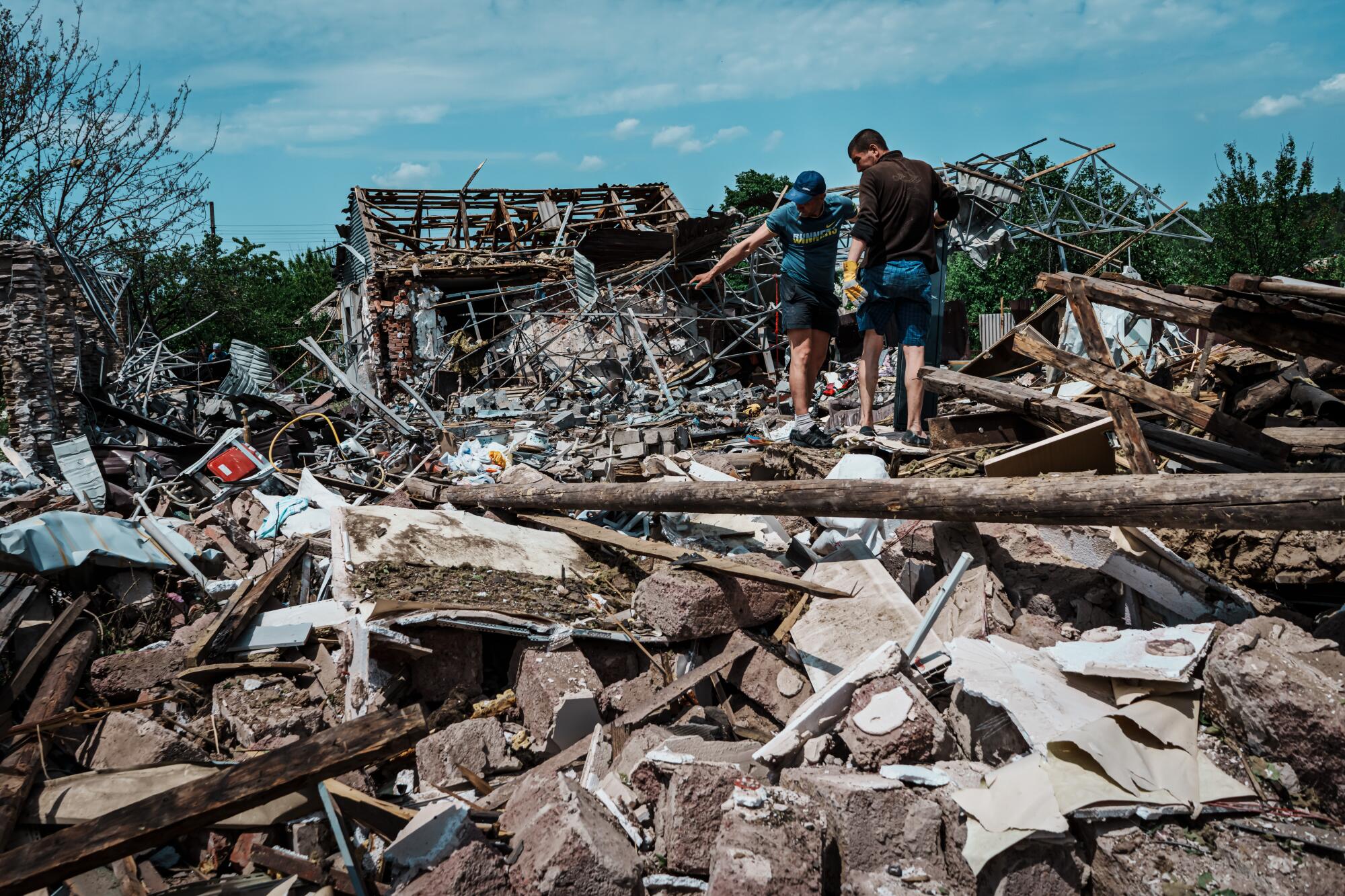
“What we are seeing is the beginning of a tide that is turning in Russia’s direction in terms of a war of attrition,” said Jonathan Eyal, associate director of the Royal United Services Institute, a British security think tank. “[Moscow] has taken on a narrowed task of not trying to overwhelm Ukraine.”
Russian President Vladimir Putin initially sought to topple Ukraine’s government in a few days and install a puppet leader in Kyiv. Now, those aspirations appear to have been scaled back to a land grab that can be touted as triumph to the Russian masses and the country’s compliant media.
At this point, Russia controls some 20% of Ukrainian territory, Ukrainian President Volodymyr Zelensky told Luxembourg lawmakers in a video appearance Thursday. That is up from about 7% of Ukraine territory under Russian domination before the Feb. 24 invasion, including Crimea and parts of the Donbas ruled by pro-Russia separatists. Ukraine will never accept the Russian occupation, Zelensky insists. On the other hand, the prospects seem slim that Russia will ever return the land back to Ukraine.
Whether that fundamental impasse about the disputed territories will be resolved — through military force, negotiation or some other means — remains perhaps the major question mark of this grueling conflict.
The war in the east is a protracted, World War I-style slog based largely on artillery fire, dubbed the “God of War” by none other than Josef Stalin. Gone are the lumbering columns of tanks plodding through enemy territory that stretched supply lines and proved vulnerable to ambush in Russia’s disastrous attack on Kyiv at the beginning of the invasion.
Russia’s subsequent focus on the Donbas, largely waged from pro-Moscow separatist enclaves — and showcasing battle-hardened Ukrainian allies fighting on home terrain — represents a kind of return to Soviet-era military doctrine. It’s not new-age warfare: Deliberate ground advances follow scorched-earth artillery barrages that soften opposition targets, decimating not only the Ukrainian military but civilian homes, shops, infrastructure and anything else in the Russian troops’ path.

“This is the traditional Soviet and Russian approach: You concentrate a lot of firepower in a small place and you keep going until you destroy your opponent,” said Eyal. “There’s a large amount of blood expended on these rather miserable victories that Russia can claim for its own.”
With neither side in the conflict providing regular casualty updates, the toll in deaths and injuries remains opaque.
“Tens of thousands” of civilians have been killed, Zelensky told the Luxembourg parliament Thursday. A day earlier, he told Newsmax, the far-right American cable news channel, that between 60 and 100 Ukrainian soldiers are lost on the battlefield each week. An additional 500 are wounded, he said.
Last month, Russia won its biggest victory of the war by overcoming the last defenders of the port city of Mariupol — long a symbol of Ukrainian resistance. Its capitulation, accompanied by images of bedraggled Ukrainian fighters surrendering after months holed up in a metalworks, was a strategic and propaganda coup for the Kremlin.
Mariupol is part of Donetsk province, which, along with adjoining Luhansk, make up the Donbas. The southern city’s capture completes a land corridor from Russian-held areas in the Donbas to the Crimea, the peninsula seized by Russian in 2014.
Some 165 miles northeast of Mariupol, Russian forces have now almost completely overrun their next major target: the industrial city of Severodonetsk, which since 2014 has served as Ukraine’s administrative hub for Luhansk province. Intense shelling has already driven off most residents and left much of the city in ruins, just like Mariupol. Opposing forces have been engaged in street fighting amid the wreckage. The imminent fall of Severodonetsk also threatens Lysychansk, which sits across the Seversky Donets River.
Losing the twin cities would mean that Russia in effect controls the entirety of Luhansk.
Meanwhile, Russia has already accelerated attacks in the direction of Slovyansk and Kramatorsk, the two main cities in Donetsk province still under Ukrainian government control.
For more than a month, Russian troops have engaged in shaping operations, attacking villages with indiscriminate artillery barrages outside Severodonetsk with the aim of choking off supply routes for the military and civilian populations.
The Russians’ sheer numerical superiority, both in troops and materiel, means that a takeover is usually not a matter of if, but when. “They never stop firing,” said one Ukrainian soldier stationed near the town of Lyman before it fell into Russian hands last month.


The unyielding campaign has transformed once-thriving communities into vast debris fields.
Rubizhne was a quaint city of more than 50,000 outside Severodonetsk until Putin’s forces invaded.
The onslaught began in April. Artillery duels ensued over Rubizhne. That gave way to street battles. Ukrainian defenders bunkered in a pharmaceutical plant before finally retreating over a bridge to Severodonetsk. They then blew up the span to slow their pursuers.
A video from a Ukrainian National Guard drone shows the aftermath: Russian soldiers walk through streets with barely a single building standing; none is undamaged, the rubble denuding Rubizhne of almost all colors but gray.
Six weeks later, Rubizhne is firmly under Russian control, one of three staging zones for the all-out assault on Severodonetsk. Residents from nearby cities ask themselves — as they have for months now — if it’s time to go.
Times staff writers McDonnell reported from Kramatorsk and Bulos from Severodonetsk and Rubizhne.
More to Read
Sign up for Essential California
The most important California stories and recommendations in your inbox every morning.
You may occasionally receive promotional content from the Los Angeles Times.
